Author Archives: Jenny Grip
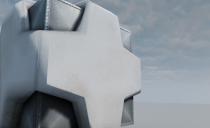
Blog report week 05
Different maps
When creating a material for a mesh you usually combine three texture maps, Diffuse, Normal and Specular:
The Diffuse map is the colours of the model and it contains surface details and some self-shadowing. This is the most important texture since this holds the most straight-forward information. It shows what colour and what texture your model have. It is important to not add any other shadows, from a light source for example, because those will not be accurate when the model […]

Blog report week 05
Different maps
When creating a material for a mesh you usually combine three texture maps, Diffuse, Normal and Specular:
The Diffuse map is the colours of the model and it contains surface details and some self-shadowing. This is the most important texture since this holds the most straight-forward information. It shows what colour and what texture your model have. It is important to not add any other shadows, from a light source for example, because those will not be accurate when the model […]

Blog report week 05
Different maps
When creating a material for a mesh you usually combine three texture maps, Diffuse, Normal and Specular:
The Diffuse map is the colours of the model and it contains surface details and some self-shadowing. This is the most important texture since this holds the most straight-forward information. It shows what colour and what texture your model have. It is important to not add any other shadows, from a light source for example, because those will not be accurate when the model […]

Blog report week 05
Different maps
When creating a material for a mesh you usually combine three texture maps, Diffuse, Normal and Specular:
The Diffuse map is the colours of the model and it contains surface details and some self-shadowing. This is the most important texture since this holds the most straight-forward information. It shows what colour and what texture your model have. It is important to not add any other shadows, from a light source for example, because those will not be accurate when the model […]
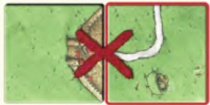
Boardgame analysis | Carcasonne
Game description
In Carcassonne 2-5 players create a land with cities, roads, cloisters and farmland. By drawing a tile and placing it adjacent to another tile you make your city bigger, your road longer and your farmland wider in order to gain more score and win the game. When a player has put down a tile they can place a follower on that tile. When a follower is placed at a land type they become a specific type of follower. A […]

Boardgame analysis | Carcasonne
Game description
In Carcassonne 2-5 players create a land with cities, roads, cloisters and farmland. By drawing a tile and placing it adjacent to another tile you make your city bigger, your road longer and your farmland wider in order to gain more score and win the game. When a player has put down a tile they can place a follower on that tile. When a follower is placed at a land type they become a specific type of follower. A […]

Boardgame analysis | Carcasonne
Game description
In Carcassonne 2-5 players create a land with cities, roads, cloisters and farmland. By drawing a tile and placing it adjacent to another tile you make your city bigger, your road longer and your farmland wider in order to gain more score and win the game. When a player has put down a tile they can place a follower on that tile. When a follower is placed at a land type they become a specific type of follower. A […]

Boardgame analysis | Carcasonne
Game description
In Carcassonne 2-5 players create a land with cities, roads, cloisters and farmland. By drawing a tile and placing it adjacent to another tile you make your city bigger, your road longer and your farmland wider in order to gain more score and win the game. When a player has put down a tile they can place a follower on that tile. When a follower is placed at a land type they become a specific type of follower. A […]
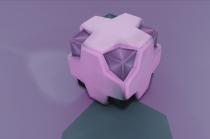
Homework W 04 – Textured crate
This is my Sci-Fi crate for assignment 1, textured and put into UDK.
So why does it look like this? When I made my crate I was inspired by the not-so-obviously-openable crates that are usually used in Science Fiction games. These can be placed on buttons, moved to redirect or intervene lasers, thrown through a barrier and used as a stair, among many other things. In some games they are placed in large rooms to fill out space and sometimes […]

Homework W 04 – Textured crate
This is my Sci-Fi crate for assignment 1, textured and put into UDK.
So why does it look like this? When I made my crate I was inspired by the not-so-obviously-openable crates that are usually used in Science Fiction games. These can be placed on buttons, moved to redirect or intervene lasers, thrown through a barrier and used as a stair, among many other things. In some games they are placed in large rooms to fill out space and sometimes […]

Homework W 04 – Textured crate
This is my Sci-Fi crate for assignment 1, textured and put into UDK.
So why does it look like this? When I made my crate I was inspired by the not-so-obviously-openable crates that are usually used in Science Fiction games. These can be placed on buttons, moved to redirect or intervene lasers, thrown through a barrier and used as a stair, among many other things. In some games they are placed in large rooms to fill out space and sometimes […]

Homework W 04 – Textured crate
This is my Sci-Fi crate for assignment 1, textured and put into UDK.
So why does it look like this? When I made my crate I was inspired by the not-so-obviously-openable crates that are usually used in Science Fiction games. These can be placed on buttons, moved to redirect or intervene lasers, thrown through a barrier and used as a stair, among many other things. In some games they are placed in large rooms to fill out space and sometimes […]

Blog Report Assignment 2 Part 1
This is the object I chose from the museum. I chose the object because of the vain reason that I liked the way it looked. I enjoy symmetry and at first glance it looked very symmetric as opposed to some of the more damaged objects in the collection. It is also made of metal which is a very interesting material. I would like to be able to texture it in the shiny but not shiny way that old objects […]

Blog Report Assignment 2 Part 1
This is the object I chose from the museum. I chose the object because of the vain reason that I liked the way it looked. I enjoy symmetry and at first glance it looked very symmetric as opposed to some of the more damaged objects in the collection. It is also made of metal which is a very interesting material. I would like to be able to texture it in the shiny but not shiny way that old objects […]

Blog Report Assignment 2 Part 1
This is the object I chose from the museum. I chose the object because of the vain reason that I liked the way it looked. I enjoy symmetry and at first glance it looked very symmetric as opposed to some of the more damaged objects in the collection. It is also made of metal which is a very interesting material. I would like to be able to texture it in the shiny but not shiny way that old objects […]

Blog Report Assignment 2 Part 1
This is the object I chose from the museum. I chose the object because of the vain reason that I liked the way it looked. I enjoy symmetry and at first glance it looked very symmetric as opposed to some of the more damaged objects in the collection. It is also made of metal which is a very interesting material. I would like to be able to texture it in the shiny but not shiny way that old objects […]
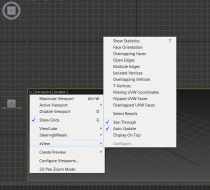
Blog Report Week 03
This week on the Wednesday lesson we learned how to optimise our models. We also went through the xView menu.
xView highlights common modelling problems such as overlapping vertices or faces. We used this when we optimised our group members’ models and later one of our own.
This is the before and after of my cartoon chest. The optimisation was made by Mikaela Moberg. Apparently it did not have a lot of problems in it, except for the caps on the cylinders. […]

Blog Report Week 03
This week on the Wednesday lesson we learned how to optimise our models. We also went through the xView menu.
xView highlights common modelling problems such as overlapping vertices or faces. We used this when we optimised our group members’ models and later one of our own.
This is the before and after of my cartoon chest. The optimisation was made by Mikaela Moberg. Apparently it did not have a lot of problems in it, except for the caps on the cylinders. […]
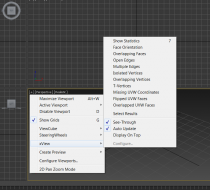
Blog Report Week 03
This week on the Wednesday lesson we learned how to optimise our models. We also went through the xView menu.
xView highlights common modelling problems such as overlapping vertices or faces. We used this when we optimised our group members’ models and later one of our own.
This is the before and after of my cartoon chest. The optimisation was made by Mikaela Moberg. Apparently it did not have a lot of problems in it, except for the caps on the cylinders. […]

Blog Report Week 03
This week on the Wednesday lesson we learned how to optimise our models. We also went through the xView menu.
xView highlights common modelling problems such as overlapping vertices or faces. We used this when we optimised our group members’ models and later one of our own.
This is the before and after of my cartoon chest. The optimisation was made by Mikaela Moberg. Apparently it did not have a lot of problems in it, except for the caps on the cylinders. […]

Three themes, three crates (3d lesson 2)
Cartoon Chest
Cartoon styled games are usually directed to children and teenagers. The style usually has very simplified shapes and objects with happy colour schemes and often falls into the visual style Simplified Realistic and Stylized Abstract. Objects in cartoony games are usually bigger than in real life and there is often a very prominent theme for what shapes and colours objects have.
Some games that I believe are typical cartoon games are Super Mario and the Crash Bandicoot series. They are […]

Three themes, three crates (3d lesson 2)
Cartoon Chest
Cartoon styled games are usually directed to children and teenagers. The style usually has very simplified shapes and objects with happy colour schemes and often falls into the visual style Simplified Realistic and Stylized Abstract. Objects in cartoony games are usually bigger than in real life and there is often a very prominent theme for what shapes and colours objects have.
Some games that I believe are typical cartoon games are Super Mario and the Crash Bandicoot series. They are […]
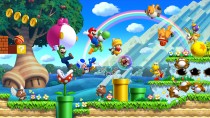
Three themes, three crates (3d lesson 2)
Cartoon Chest
Cartoon styled games are usually directed to children and teenagers. The style usually has very simplified shapes and objects with happy colour schemes and often falls into the visual style Simplified Realistic and Stylized Abstract. Objects in cartoony games are usually bigger than in real life and there is often a very prominent theme for what shapes and colours objects have.
Some games that I believe are typical cartoon games are Super Mario and the Crash Bandicoot series. They are […]

Three themes, three crates (3d lesson 2)
Cartoon Chest
Cartoon styled games are usually directed to children and teenagers. The style usually has very simplified shapes and objects with happy colour schemes and often falls into the visual style Simplified Realistic and Stylized Abstract. Objects in cartoony games are usually bigger than in real life and there is often a very prominent theme for what shapes and colours objects have.
Some games that I believe are typical cartoon games are Super Mario and the Crash Bandicoot series. They are […]